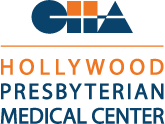WHY UV EYE SAFETY IS SO IMPORTANT
Posted on July 12, 2024
SCEI Optometrist, Dr. Pratima Gautam, answers questions regarding UV safety and why it's so important to protect your eyes. What are UV rays and why do we need to protect our eyes from them? Ultraviolet radiation energy is the band of electromagnetic radiation extending from roughly 400 nm to 200 nm produced by the sun. The main source of UV in the environment is from the sun. Sun exposure is the primary risk factor for skin cancer. UV Hazard: Skin. Skin cancers: Melanoma Basal cell carcinoma Squamous cell carcinoma Are there different types of UV rays? There are 3 UV subtypes UV-A UV-B - associated with develop... Continue Reading
 РУССКИЙ
РУССКИЙ  ENGLISH
ENGLISH 


